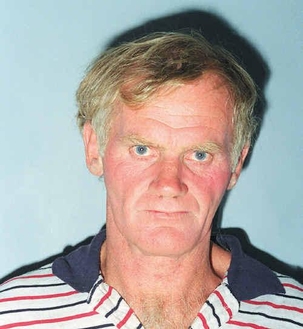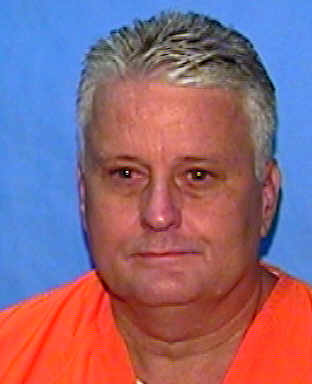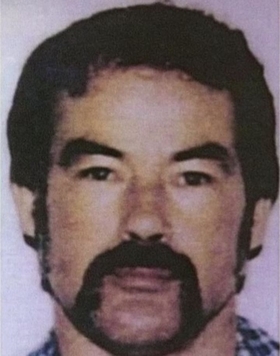Related Research Articles

HM Prison Barwon or informally Barwon Prison, an Australian high risk and maximum security prison for males, is located 6 kilometres (3.7 mi) from the township of Lara, near Geelong, Victoria, Australia. The facility is operated by Corrections Victoria. The prison provides accommodation and services for remand and sentenced prisoners detained under Victorian and Federal legislation.

Edward Joseph Leonski was a United States Army soldier and serial killer responsible for the strangling murders of three women in Melbourne, Australia in 1942. Leonski was dubbed The Brownout Strangler, after Melbourne's wartime practice of dropping the electricity voltage to conserve energy. His self-confessed motive for the killings was a twisted fascination with female voices, especially when they were singing, and his claim that he killed the women to "get their voices".
The backpacker murders were a spate of serial killings that took place in New South Wales, Australia, between 1989 and 1993, committed by Ivan Milat. The bodies of seven missing young people aged 19 to 22 were discovered partially buried in the Belanglo State Forest, 15 kilometres (9.3 mi) south-west of the New South Wales town of Berrima. Five of the victims were foreign backpackers and two were Australians from Melbourne. Milat was convicted of the murders on 27 July 1996 and was sentenced to seven consecutive life sentences, as well as 18 years without parole. He died in prison on 27 October 2019, having never confessed to the murders for which he was convicted.
This is a timeline of major crimes in Australia.

Forensic Investigators: Australia's True Crimes is an Australian television show hosted by Lisa McCune which aired on the Seven Network. It aired for three seasons from 2004 to 2006.

Mr. Cruel is the moniker for an unidentified Australian serial child rapist who attacked three girls in the northern and eastern suburbs of Melbourne, Victoria, in the late 1980s and early 1990s. He is also the prime suspect in the 1991 abduction and murder of a fourth girl, Karmein Chan. His moniker came from a headline in the Melbourne newspaper The Sun.

Janine Kerrie Balding was a homicide victim who was abducted, raped and murdered by a homeless gang of five on 8 September 1988, in Sydney, New South Wales, Australia. Balding's murder is often compared to the 1986 murder of Sydney nurse Anita Cobby.
William MacDonald was an English serial killer responsible for the deaths of five people in the Australian states of Queensland and New South Wales between 1961 and 1962.

Leonard John Fraser, also known as The Rockhampton Rapist, was an Australian convicted serial killer.

David John Birnie and Catherine Margaret Birnie were an Australian couple from Perth who murdered four women at their home in 1986, also attempting to murder a fifth. These crimes were referred to in the press as the Moorhouse murders, after the Birnies' address at 3 Moorhouse Street in Willagee, a suburb of Perth.

Robert Joseph "Bobby Joe" Long was an American serial killer and rapist who was executed by the state of Florida for the murder of Michelle Denise Simms. Long abducted, sexually assaulted, and murdered at least ten women in the Tampa Bay area in Florida during an eight-month period in 1984. He released 17-year-old Lisa McVey after 26 hours. McVey provided critical information to the police that enabled them to arrest Long.

The Trans-Australian Airlines hijacking was Australia's first aircraft hijacking. It occurred on 19 July 1960 over Brisbane in a Trans Australia Airlines (TAA) Lockheed Electra.
Allan Baker and Kevin Crump are a notorious Australian duo of rapists and double murderers who were sentenced to life imprisonment in 1974. Baker is serving his sentence at Clarence Correctional Centre whereas Crump died incarcerated at Wellington Correctional Centre in 2023.

Sian Kingi was a twelve-year-old New Zealand-Australian girl of partial Maori descent who was abducted, raped and murdered in Noosa, Queensland in November 1987. Barrie John Watts and Valmae Faye Beck, a married couple, were convicted in 1988 of the much-publicised crime. Watts was sentenced to life imprisonment without parole. Beck would have been eligible for parole after 14.5 years, but died while she was still incarcerated.

Ivan Robert Marko Milat, commonly referred to in media as the Backpacker Murderer, was an Australian serial killer who abducted, assaulted, robbed and murdered two men and five women in New South Wales between 1989 and 1992. His modus operandi was to approach backpackers along the Hume Highway under the guise of providing them transport to areas of southern New South Wales, then take his victims into the Belanglo State Forest where he would incapacitate and murder them. Milat is also suspected of having committed many other similar offences and murders around Australia.
Brett Peter Cowan is an Australian murderer and serial child rapist. He was convicted of the murder of Daniel Morcombe, a 13-year-old boy who disappeared from the Sunshine Coast on 7 December 2003. His abduction led to an eight-year investigation involving various suspects. As a result of these investigations, Cowan led undercover police to a potential burial site. He was charged with the murder that same month, and Morcombe's remains were discovered days later on 17 August. Cowan was sentenced to life imprisonment, on 13 March 2014 in a trial that attracted worldwide attention. Cowan had two previous convictions for sexually abusing children, the earliest dating back to 1987.
Lloyd Clark Fletcher is an Australian convicted rapist and murderer whose most well known crime was the sexual assault and murder of 15 year old Janet Phillips in Wynnum, Queensland on 19 July 1987. He is currently serving an indefinite life sentence without possibility of parole in Queensland.
The Bandidos Motorcycle Club is classified as a motorcycle gang by law enforcement and intelligence agencies in numerous countries. While the club has denied being a criminal organization, Bandidos members have been convicted of partaking in criminal enterprises including theft, extortion, prostitution, drug trafficking and murder in various host nations.
References
- 1 2 3 4 5 6 7 8 9 "R v Coulston, Ashley Mervyn [1993] VicSC 497". Austlii. Supreme Court of Victoria. 21 September 1993.
- 1 2 3 Webb, Emily (5 June 2014). "Read the chilling tale of The Burwood Triple Murders from Emily Webb's 'Murder in Suburbia'". Herald Sun . Retrieved 9 March 2018.
- ↑ Rule, Andrew (31 July 2021). "Andrew Rule: What happened in missing years of a monster?". Herald Sun. The Herald and Weekly Times. Retrieved 1 August 2022.
- 1 2 3 4 5 6 7 8 9 10 R v Ashley Mervyn Coulston [1995] VSC 97 (12 April 1995), S.C. (Vic.)
- 1 2 3 4 5 6 7 8 Kennedy, Les (27 November 2000). "Evil unmasked". Sydney Morning Herald . p. 9.
- ↑ G'day 88, Microyachts in the Tasman
- 1 2 3 Stolz, Greg (7 April 2008). "Balaclava Killer case reopened". Courier Mail. Archived from the original on 8 April 2008.
- ↑ Webb, Emily (2014). Murder in Suburbia: Disturbing stories from Australia’s dark heart. Scoresby, Victoria: The Five Mile Press. p. 6. ISBN 9781743465288.
- ↑ "Murderer hoards violent TV images". The Age . Australian Associated Press. 7 February 2005. Retrieved 5 May 2018.
- ↑ "Probe under way into killer's violent computer pics". ABC News . Australia. 7 February 2005. Retrieved 5 May 2018.
- ↑ Cartwright, Lexie (7 May 2016). "The balaclava killer and rapist was never captured after a series of crimes in the late '70s to '80s". Gold Coast Bulletin . Retrieved 9 March 2018.
- ↑ "Masked murderer and rapist may be revealed". Tweed Daily News . 8 April 2008. Archived from the original on 19 July 2008.
- ↑ McIntosh, Kate (30 October 2013). "The Balaclava killings: Getting away with murder". Tweed Daily News. Retrieved 9 March 2018.
- 1 2 Simpson, Lindsay; Harvey, Sandra (14 October 1989). "Why they Hunted Harry". Sydney Morning Herald . p. 73.